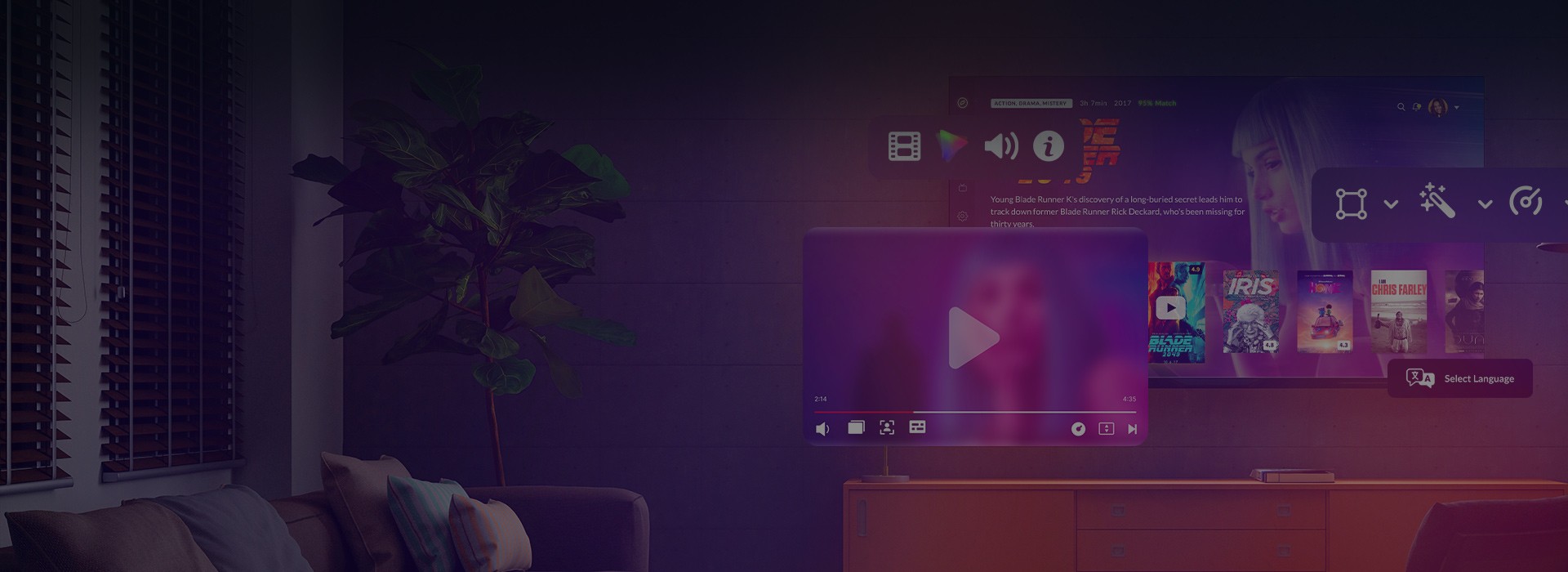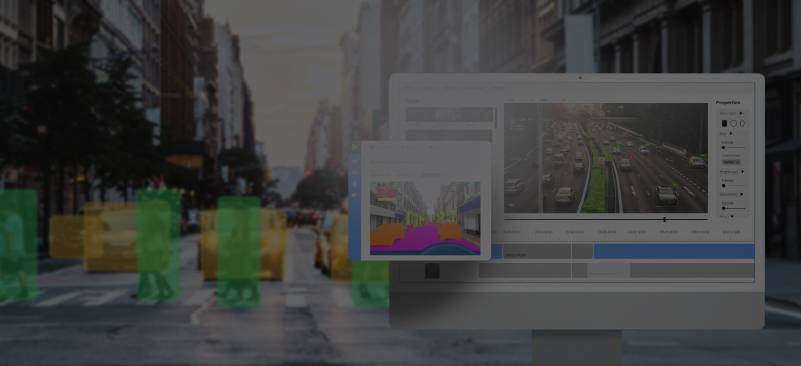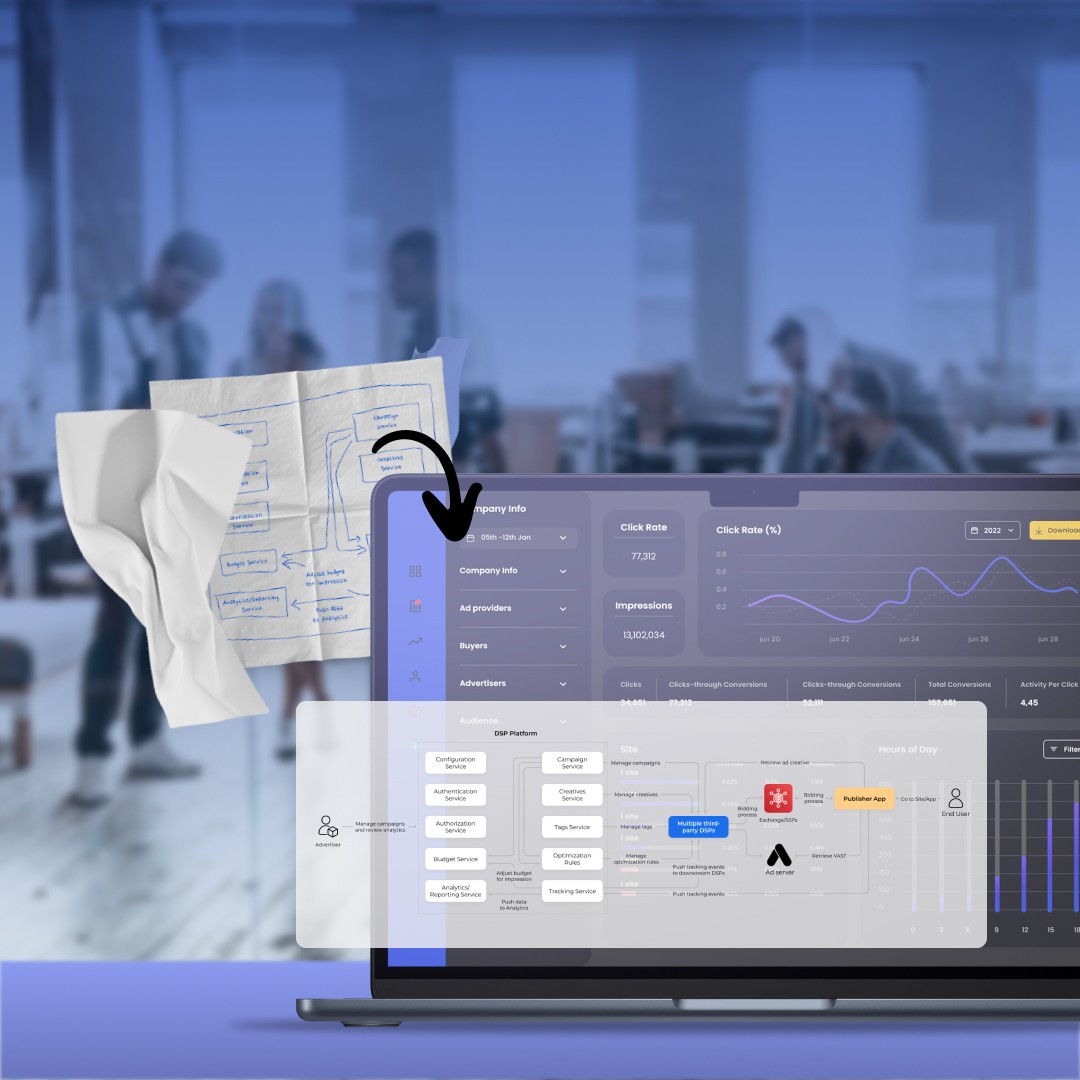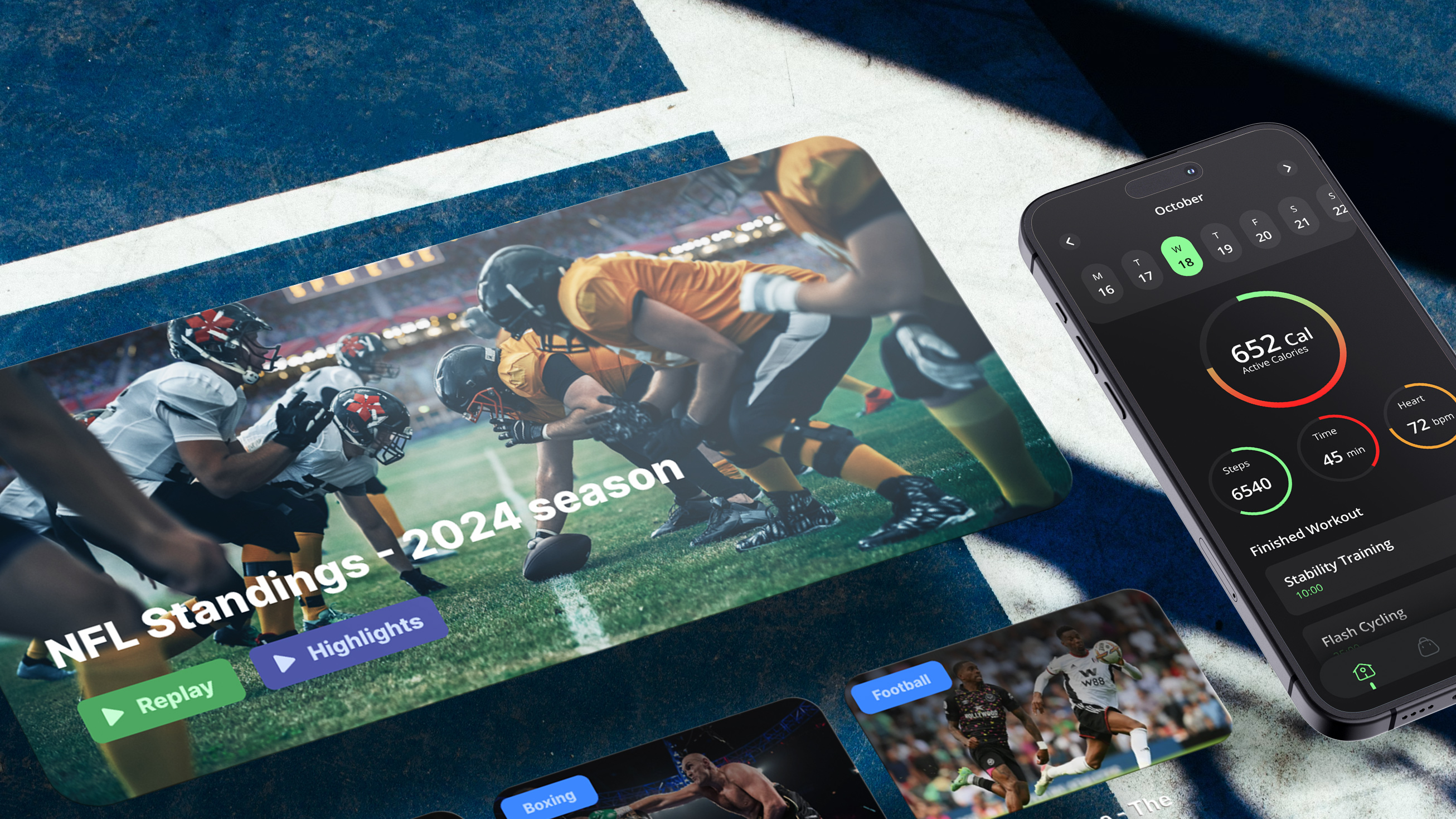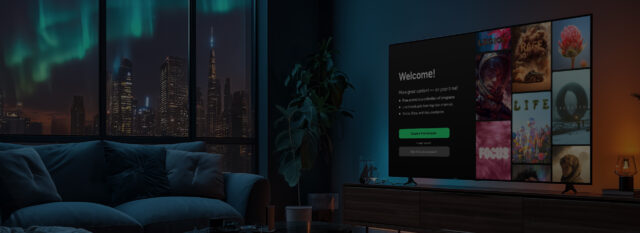When content distributors, creators or streaming providers approach us with plans to grow their user base and scale their presence across platforms, including Roku, the conversation often starts with a familiar line of questioning: “Can we do what we saw on YouTube — but on Roku?”, “Is that Netflix-like feature even possible with Roku’s components?” And then comes the hopeful glance toward the horizon: “We’ve heard Roku’s native features can be kind of limited, but maybe the new Roku updates will unlock that kind of functionality?”
It’s a fair assumption. Roku has a reputation for being solid but somewhat rigid. And yes, recent updates do offer some welcome new tools.
But it’s far from the whole picture either. Much more is possible on Roku than most assume.
So, let’s explore what’s actually new — and what’s always been possible (though sometimes unwittingly overlooked).
Guiding us through the technical details of Roku updates, platform’s subtleties, and shedding light on the vast potential of Roku’s capabilities is expert Ivan Popovic, Senior Roku Developer at Oxagile, whose day-to-day work lives at the intersection of platform guidelines and creative solutions.
Where does Roku stand in 2025?
If your app strategy includes a place on the big screen in American homes, Roku isn’t just worth considering — it’s hard to ignore and here’s why.
As of 2024, Roku maintains a dominant 37% share of the North American connected TV (CTV) streaming device market according to TVTechnology. And that’s not a temporary lead — CEPro reports Roku continues to be one of the most widely used media platforms in U.S. households, driven by solid adoption and lasting user loyalty.
In Latin America, the platform’s grip is even stronger. Roku captured 50% of Share of Voice in 2024, far outpacing competitors like Samsung (21%), LG (7%), and Amazon (3%).
As we explored recently, one of the reasons for this dominance is that while Apple TV courts high-end aesthetics and Android TV chases open-ended flexibility, Roku stays planted in the middle — and this seems to resonate with both users and developers.
The platform’s internal numbers reflect steady growth as well. By Q1 2024, Roku had reached 81.6 million active accounts — a 20-million increase over two years. Developers are clearly paying attention, with an average of 13 new apps added to the Roku Channel Store each day.
But no worries, there’s still space for new entrants.
So, what does that mean for 2025? Roku isn’t just holding on — it’s expanding. And if your product roadmap includes reaching U.S. households through connected TV, skipping over Roku could mean missing a third of your potential audience.
Roku new features and how they streamline video streaming market trends
Roku is nothing if not relentless — their team has been rolling out updates like clockwork. Over the last two years, these updates have methodically addressed diverse aspects of the platform — performance and stability, backend enhancements, UX/UI improvements, and new features — making life simpler for both users and developers.
Among the most significant updates in recent years was Roku OS 12.5, launched in September 2023. This release marks a turning point, and it is from here that we start unpacking the new Roku features.
What to Watch: browse by category & genres
What’s different this time?
Roku OS 12.5 introduced category-based browsing within the What to Watch section. Users can now explore content by selecting predefined categories such as Movies, TV Shows, New & Popular, and more. Within each category, they can refine their search further by selecting a specific genre, such as action, comedy, crime, and others. Roku also launched new curated experiences tailored to particular themes or interests, like food or home, featuring selections of related entertainment.
What’s better now?
For viewers, this means less scrolling, better personalization, and more engaging browsing through curated experiences tailored to specific interests, like food or home entertainment.
For content distributors, the update improves visibility by ensuring content is placed in relevant categories, increases viewer retention by making discovery more intuitive, and allows targeted promotion through specialized genre-based collections.
Personalized sports experience & highlights
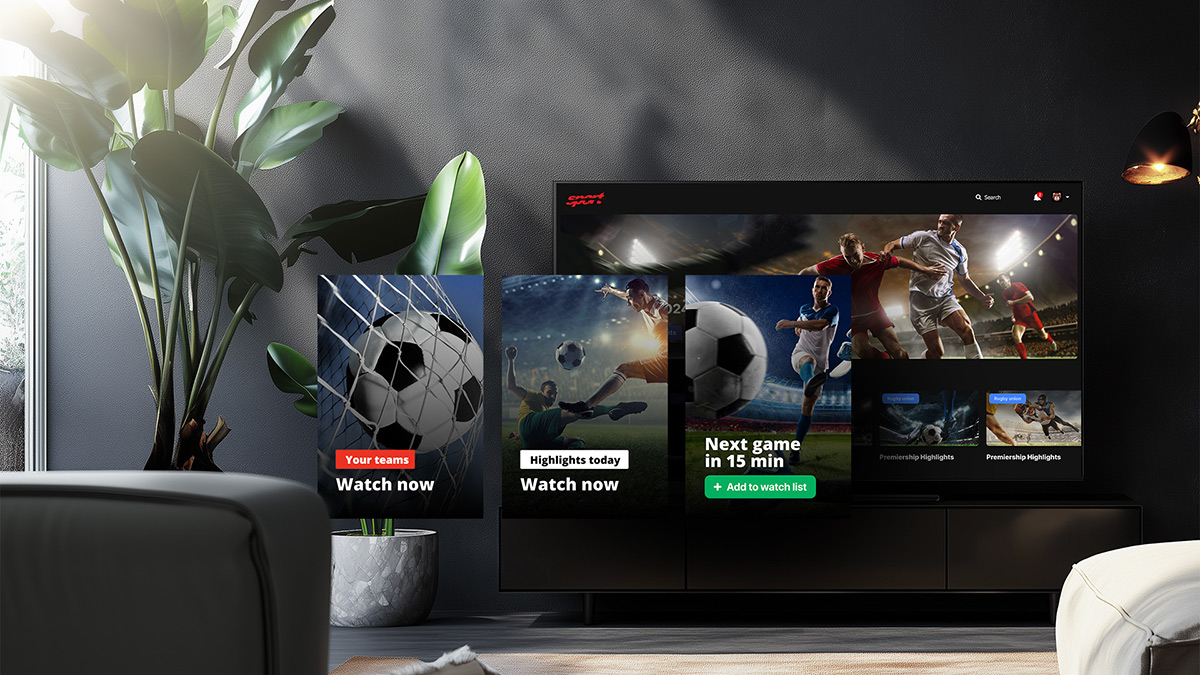
What’s different this time?
Roku OS 12.5 introduced team favoriting and surfaces sports highlights — short clips and analysis — from select leagues. Users can follow specific teams and receive real-time, personalized updates in the Sports Zone and via Roku Search. Roku OS 14.5 expanded the Sports Zone with a personalized highlight row, allowing users to follow their favorite teams and players for tailored clips and updates.
What’s better now?
For viewers, this creates a hyper-personalized sports experience, delivering relevant highlights without manual searches. It caters to fans who want quick updates on specific teams or athletes, enhancing engagement during and between games.
For developers, this feature provides a robust framework for behavioral targeting. By leveraging user preferences, developers can integrate dynamic feeds, sponsor-driven highlights, or interactive elements like polls or stats overlays, driving both engagement and monetization.
Expert context:
On Roku, native components are essentially “black boxes” — you can only interact with their interfaces, not their internal logic. They might include a lot of unnecessary configuration options, which makes them heavier than needed. If you’re building a lean, real-time interface for favorites or highlights — where the backend data might come in varying formats or need custom processing — writing a custom component is often more efficient. This also helps avoid memory issues typical on Roku-class devices like HDMI sticks or Smart TVs, which don’t offer the capacity of mobile or desktop environments.
Real-life case: the Achilles’ heel of Roku’s native frameworks

A common architectural trap on Roku is relying on simplified frameworks like SGDex, which was originally built by Roku to support basic apps.
In one of our recent projects, the application was originally developed by a previous vendor using Roku’s SGDex framework. SGDex (SceneGraph Developer Extensions) was introduced by Roku as a transitional toolkit to help convert applications created with Roku Direct Publisher into full-fledged SceneGraph-based Roku apps.
Previously, Roku Direct Publisher offered a simplified way for content providers to launch channels without writing code, using a feed-based system. However, in 2024, Roku officially announced that Direct Publisher is being deprecated and will no longer be supported, making SGDex a natural bridge for migrating to the more flexible and fully featured SceneGraph development environment.
While SGDex is useful for quickly getting a basic app running, it becomes a limiting factor when custom functionality is required. As more custom features were requested — like expanded home navigation or client-specific UI logic — that framework became a bottleneck — especially since it used Brighterscript which doesn’t support standard debugging, making it almost impossible to trace issues or fine-tune performance (e.g., in unstable grid behavior). And since the app had to support white-label deployments for dozens of affiliates, each with their own UI nuances, the architecture became fragile and overly complex.
The lesson: building scalable Roku apps often requires custom components tailored to backend structure and UX goals, not repurposed generic frameworks — especially when long-term extensibility and maintainability are key.
Favoriting teams
What’s different this time?
Users can favorite teams directly from search or content detail pages. Favorited teams generate a dedicated content row in the Sports Zone, featuring upcoming and live games.
What’s better now?
For users, this shifts the model from reactive discovery to proactive content delivery. Instead of having to remember schedules or search repetitively, fans are fed relevant matchups as soon as they turn on their device — turning the home screen into a dynamic, live sports dashboard.
From a developer’s perspective, this introduces sticky UI components that anchor users within a specific content vertical (sports), encouraging platform loyalty. It also enriches user profiles with actionable preferences — data that can be leveraged to develop smarter recommendation engines or integrated with third-party sports content APIs.
Expert context:
Native Roku components often come with excessive overhead — dozens of configurable fields — even if the use case only needs a handful. Since their inner workings aren’t exposed, optimizing them for specific design or data scenarios isn’t always possible. That’s why in practice, if you need full control over how user preferences are applied, and how personalized rows are rendered — particularly with backend-specific requirements — building a custom UI component is the safer and more performant choice.
Sports highlights
What’s different this time?
Select sports leagues now provide highlight clips and game analysis directly within Roku’s Sports Zone, as well as through traditional search. These short-form content segments are context-aware and dynamically updated.
What’s better now?
For viewers, this taps into the growing demand for condensed, snackable sports content. It reduces commitment thresholds — users can engage with sports updates even without watching full matches. This is particularly valuable in an era of fragmented attention spans and on-the-go consumption.
For developers and sports media partners, highlight support provides a content layer that sits between live events and full replays. It enables monetization through pre-rolls or sponsorships, while also acting as an engagement funnel to drive users toward longer-form viewing.
Expert context:
Roku’s native components for things like lists or grids are often too robust — they support a wide range of scenarios, many of which may be irrelevant to your specific case. This makes the component heavier than necessary, both in terms of memory usage and loading time. For something like a highlights row, which should be extremely fast and minimal, it’s often better to create a custom renderable component that only does exactly what’s needed and nothing more. That way, you avoid overhead and keep performance optimal.
Expanded sports coverage: motorsports & Max integration
What’s different this time?
Roku’s Sports Zone will expand in 2024 to include motorsports coverage and new sports content from Max, joining existing channel partners on the platform.
What’s better now?
This not only broadens the genre spectrum within Roku’s sports vertical but also strengthens the platform’s value proposition to niche audiences. Motorsports fans, often underserved on mainstream platforms, now gain a tailored entry point.
For developers, the increased diversity of sports content enables more granular audience targeting and the opportunity to build out specialized companion features — like real-time stats, interactive leaderboards, or motorsports-specific UI modules. It also encourages integration strategies with premium partners like Max for co-branded experiences.
Expert context:
The challenge here may lie in backend variability. One content provider might use GraphQL, another REST. One might return all necessary data in a single request, another might require multiple steps. Roku’s native components require a strict data format — they don’t care how your backend works. That’s why building custom components allows developers to tightly align with the actual data flow and avoid reformatting or creating unnecessary complexity. You define exactly what the component expects and how it performs, depending on how the backend responds.
Roku mobile app updates
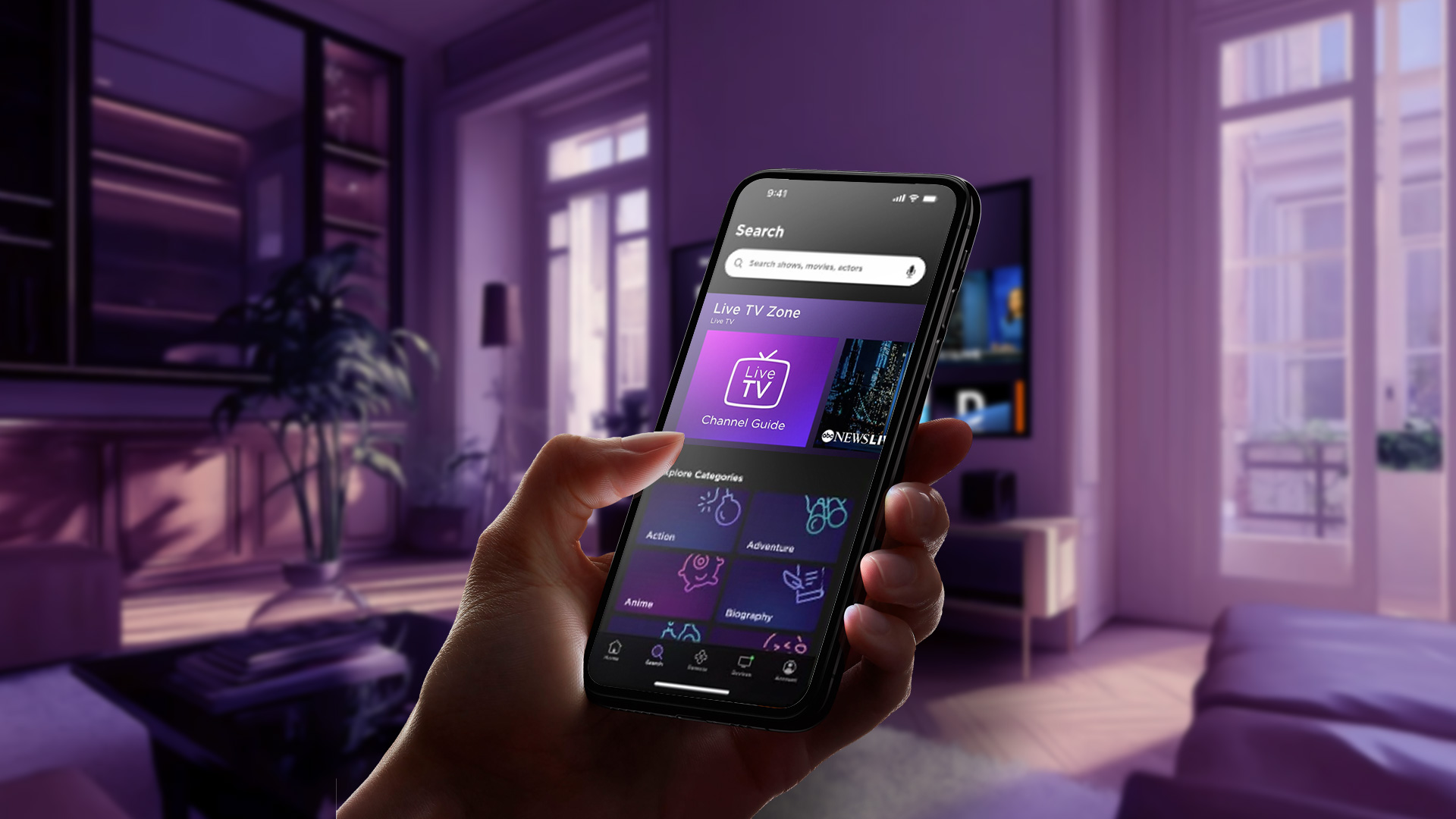
What’s different this time?
The Roku Mobile App becomes more visual and interactive in its latest update. Enhancements include rich artwork integration in search results, new genre-based Roku Zones, a redesigned “Continue Watching” section in the Remote tab, and visibility into subscription-based content on the Home tab.
What’s better now?
For users, this repositions the mobile app as more than a secondary tool—it becomes a co-pilot to the living room experience. Visual search reduces cognitive friction, while “Continue Watching” within the remote interface enhances continuity between mobile and TV screens.
For product teams and app developers, the mobile app is a springboard for second-screen innovation. Drawing from Oxagile’s experience with real-time stats overlays and live fan chat integrations, developers could extend the app to deliver synchronized data visualizations, companion polls, or community-driven experiences during live events — effectively turning passive viewers into active participants.
Expert context:
Roku mobile development has its own limits — there are no emulators, and debugging is mostly manual. Native components provide limited flexibility in styling or behavior, especially when adapting features like visual search across devices. Building lightweight visual elements as custom components allows more precise control, visual consistency, and faster rendering — especially important on lower-tier mobile hardware or cross-device setups.
Case example: custom Roku app for a leading music streamer
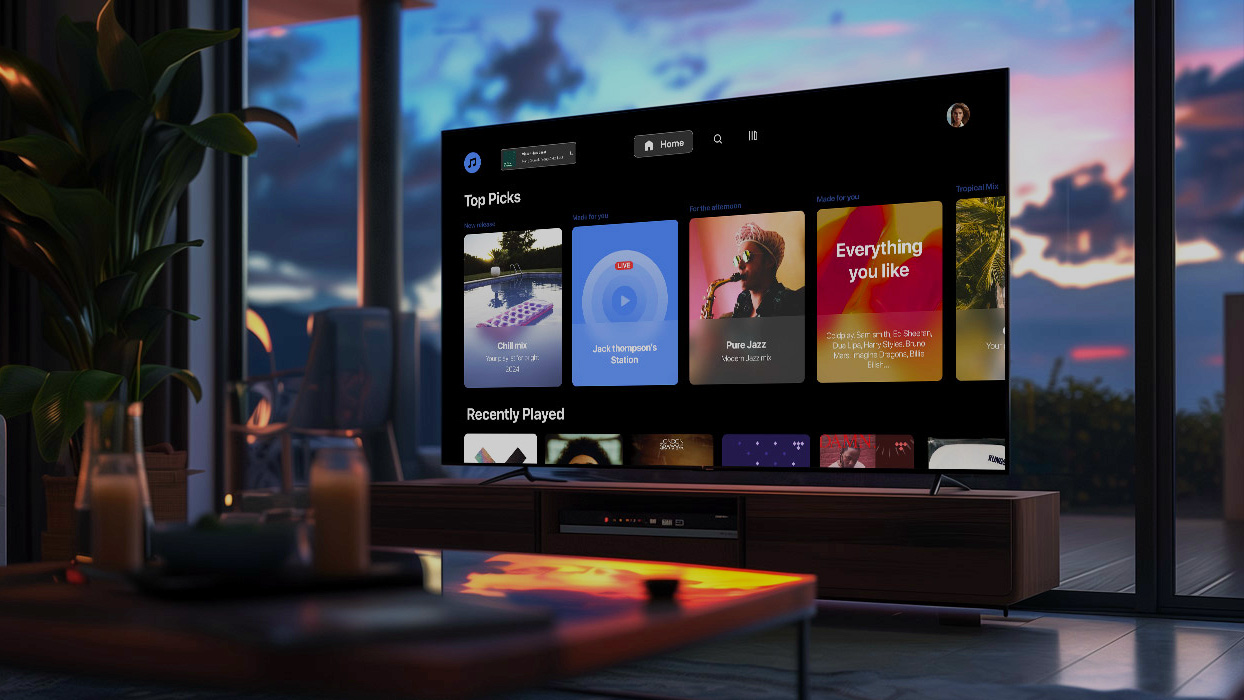
In one of the recent projects, standard SceneGraph components couldn’t handle dynamic karaoke-style lyrics animations and efficient audio playback. The goal was to create an app where a music video plays with lyrics displayed smoothly on-screen, featuring real-time word highlighting to guide singing. The lyrics flow naturally line by line, like a song, with the next line always visible to cue the user. Even when rewinding, the lyrics animation stays in sync, preserving the immersive feel of a live karaoke experience.
To achieve this, we rebuilt key screens from scratch: custom karaoke lyric renderers, dynamic menus driven by backend data, and on-the-fly album art resizing via AWS Lambda to conserve memory. The result was a high-performance, certification-compliant, and scalable Roku client delivering smooth animations, rapid content loading, and a cohesive UX across platforms.
Visual search and discovery
What’s different this time?
Visual Search now extends to the Roku Mobile App, presenting search results with cover art, genre tags, and content clusters (Roku Zones). This aligns with Roku’s broader move toward image-driven navigation across platforms.
What’s better now?
This update reflects a shift in how users mentally organize and prioritize content. Rather than parsing through lists, they now interact with an interface that mirrors human recall — through visual memory. The result is faster decision-making and higher content engagement.
Developers can leverage this by aligning their metadata and thumbnails with these new visual systems. It places a premium on well-designed assets and opens opportunities to test A/B variants of artwork for performance-based content discovery.
Continue watching in remote tab
What’s different this time?
The “Remote” tab in the Roku Mobile App now features a “Continue Watching” row, offering seamless access to in-progress content.
What’s better now?
For viewers, this reduces session startup friction — particularly in households with multi-device ecosystems. The update also respects user intent and session history, creating a more cohesive streaming loop between mobile and TV.
For developers, this change signifies Roku’s deeper commitment to cross-device state management. It invites tighter integrations with streaming services’ APIs to ensure sync accuracy and opens avenues for machine learning to optimize resume points based on viewing context (e.g., time of day or device used).
Expert context:
Cross-session state syncing isn’t automatically handled by Roku’s core tooling. If your app spans multiple devices, syncing user session data — especially when using non-standard backends — must be built and optimized manually. Recent Roku OS updates (13.0–14.5) have focused on helping developers better track app behavior and memory use, rather than adding UI features. These updates support deeper debugging but don’t resolve complexity introduced by rigid native components.
Subscription content in home tab
What’s different this time?
User subscriptions now surface as identifiable rows within the Home tab of the Roku Mobile App. Each row includes channel logos and related content thumbnails for easier navigation.
What’s better now?
This addresses a long-standing friction point: fragmented awareness of active subscriptions. Now, users can visualize what they’re paying for and discover associated content with less effort.
For developers and content platforms, this creates a high-visibility slot to surface offerings, retain subscribers, and reduce churn. It also enables strategic content placement — like promoting a new release from a subscribed service — to users most likely to convert attention into action.
Expert context:
Even though some components — like Roku’s video player — must use the native engine, most surrounding elements (UI layers, navigation rows, metadata panels) can be built from scratch. Native Roku components often introduce configuration options and logic paths that aren’t needed for a given subscription UI. A custom solution lets developers directly shape the UX to meet business requirements without bloating the code or risking certification failure.
Roku OS 14.0 and 14.5: the new chapters
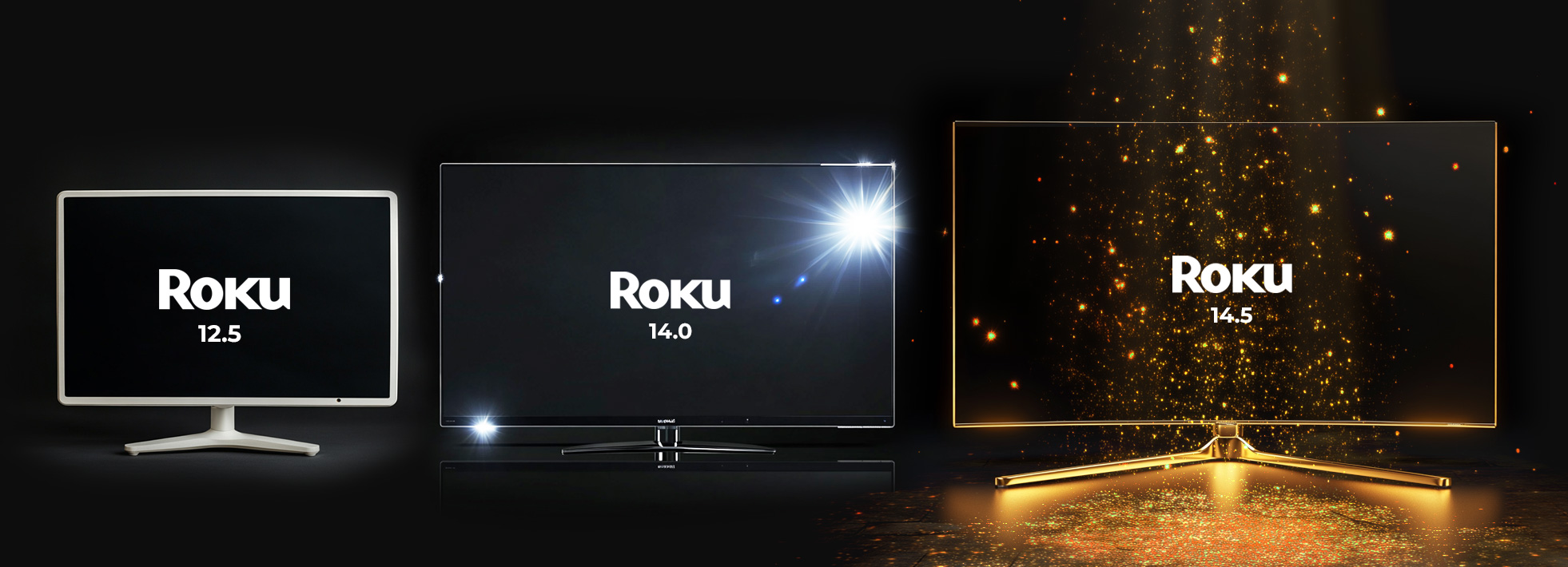
As Roku continued to evolve its platform in 2025, the release of Roku OS 14.0 and 14.5 brought a fresh wave of features aimed at streamlining content discovery, enhancing personalization, and deepening smart home integration. Announced in early 2025, these updates build on the foundation of Roku OS 12.5, addressing user pain points and opening new opportunities for developers. Here’s a breakdown of the key additions, drawing from Roku’s official announcements and industry insights.
Coming soon to theaters
What’s different this time?
Roku OS 14.0 introduced a dedicated “Coming Soon to Theaters” row on the home screen, showcasing movies currently in theatrical release. Users can add these titles to their saved list, and Roku will notify them when the films become available for streaming on the platform.
What’s better now?
For viewers, this feature bridges the gap between theatrical and home viewing, making it easier to track anticipated releases without leaving the Roku ecosystem. It reduces the need to rely on external apps or websites for movie release schedules.
For developers and content providers, this creates a new promotional channel for upcoming releases. By integrating metadata for theatrical films, studios can drive early engagement, while the saved list functionality fosters long-term user retention by keeping viewers within the platform.
Short-form content rows in all things food and all things home
What’s different this time?
Roku OS 14.0 added short-form content rows to the All Things Food and All Things Home tabs, featuring bite-sized videos such as recipes, home cleaning hacks, and DIY tutorials. These rows function similarly to TikTok or Instagram Reels, offering a seamless, swipeable experience directly on the TV.
What’s better now?
For users, this taps into the growing popularity of short-form video, providing quick, engaging content that fits casual viewing habits. It’s ideal for moments when users want inspiration without committing to a full-length show.
For developers, these rows open new monetization avenues through pre-roll ads or sponsored content. Content creators can also leverage these tabs to reach niche audiences, with the potential to drive traffic to longer-form programming or branded channels.
Bluetooth headphone mode for all Roku TVs
What’s different this time?
Introduced in Roku OS 14.5, Bluetooth Headphone Mode allows users to pair Bluetooth headphones directly with any Roku-made TV for private listening. Previously limited to higher-end models, this feature is now universal across Roku’s TV lineup.
What’s better now?
For users, this enhances accessibility and convenience, enabling private viewing in shared spaces or late-night sessions without disturbing others. It’s a significant step toward making Roku TVs more versatile for diverse households.
For developers, this opens opportunities to integrate audio-focused features, such as companion apps with synchronized audio streams or accessibility tools like real-time captions paired with private listening. It also encourages experimentation with immersive audio formats for premium content.
Conclusion
Roku trends for 2025 stay consistent: refining the user experience, adapting to changing viewing habits, and expanding what’s possible for developers behind the scenes.
But much like cars — where every model has an engine and wheels, yet some shine far brighter than others — Roku’s platform follows a similar principle. Its native components offer a dependable foundation, but the final product can vary significantly depending on the custom touches and internal architecture that developers bring to the table.
Ultimately, it’s not just about what the platform provides out of the box. It’s about how those tools are used, adapted, and enhanced. With thoughtful engineering, Roku apps can move beyond the baseline — performing smoothly, scaling reliably, and meeting the expectations of a growing, discerning audience.

